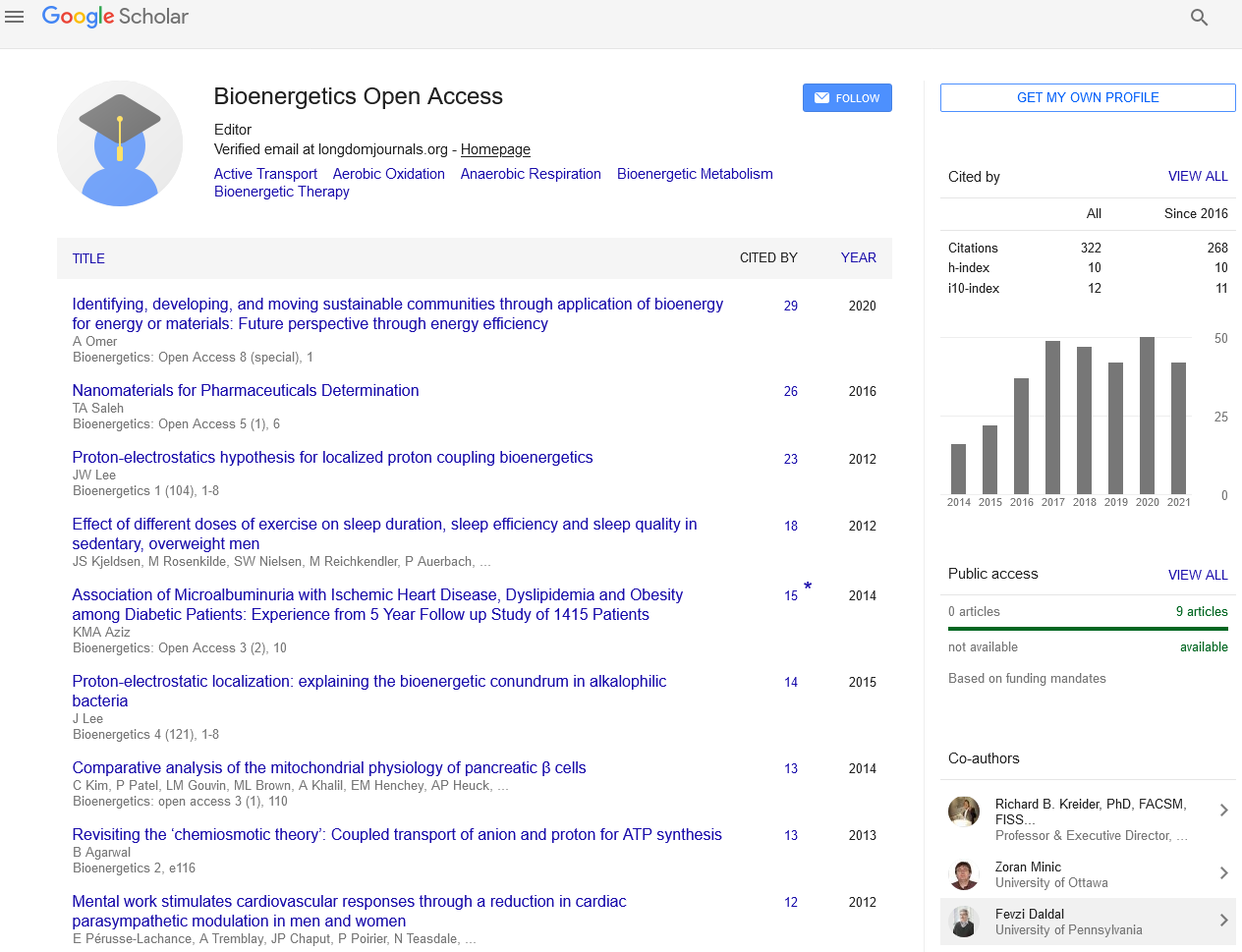Indexed In
- Open J Gate
- Genamics JournalSeek
- Academic Keys
- ResearchBible
- RefSeek
- Directory of Research Journal Indexing (DRJI)
- Hamdard University
- EBSCO A-Z
- OCLC- WorldCat
- Scholarsteer
- Publons
- Euro Pub
- Google Scholar
Useful Links
Share This Page
Journal Flyer

Open Access Journals
- Agri and Aquaculture
- Biochemistry
- Bioinformatics & Systems Biology
- Business & Management
- Chemistry
- Clinical Sciences
- Engineering
- Food & Nutrition
- General Science
- Genetics & Molecular Biology
- Immunology & Microbiology
- Medical Sciences
- Neuroscience & Psychology
- Nursing & Health Care
- Pharmaceutical Sciences
Abstract
Proton-Electrostatics Hypothesis for Localized Proton Coupling Bioenergetics
According to the proton-electrostatics localization hypothesis presented in this work, protons injected into a thylakoid may be electrostatically localized at the water-membrane interface along the lumenal surface. This hypothesis provides a natural frame work to explain a wide range of experimental observations in the bioenergetics of chloroplast and other biological systems conducted since the 1960s, including the longstanding well-characterized energetic problems of alkalophilic bacteria such as Bacillus firmus. It can also help reconcile the elegant scientific observations of both the Dilley experiment and the Junge neutral-red thylakoid proton detection. Our analysis indicates that the Mitchellian view of delocalized proton coupling to ATP synthase could only be true under special circumstances; namely, when the membrane electrical potential difference is near zero and the bulk phase-to-bulk phase pH difference becomes the dominant factor. The proton coupling under most physiological conditions of photosynthesis is likely to occur in a mixed state of proton electrostatic localization of excess charge at the membrane surface and delocalization in the bulk media. The proton-electrostatics localization hypothesis leads to a new bioenergetics equation for the proton motive force which may provide a unified framework for understanding the energetics of many biological systems.

